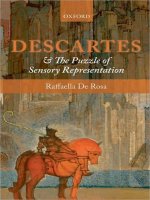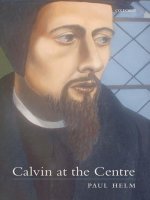- Trang chủ >>
- Khoa Học Tự Nhiên >>
- Vật lý
the nibelungenlied the lay of the nibelungs apr 2010
Bạn đang xem bản rút gọn của tài liệu. Xem và tải ngay bản đầy đủ của tài liệu tại đây (858.88 KB, 282 trang )
oxford world’s classics
THE NIBELUNGENLIED
Written down by an anonymous poet c.1200, the Nibelungenlied
(Lay of the Nibelungs) is the greatest medieval German heroic poem,
a revenge saga on an epic scale, which has justly been compared with
Homer and with the Old Icelandic Saga of Burnt Njal. Its origins
reach back into the fifth century; it underwent a long genesis in
the form of oral poetry before taking on written form. It proved
hugely popular in the Middle Ages, with some forty manuscripts
and fragments surviving. In the sixteenth century it disappeared
from sight for 200 years. The poem grew to become central to the
nationalist thinking of the Romantics, and in the twentieth century
was appropriated by Nazi propagandists. The Nibelungenlied was a
central inspiration for Richard Wagner’s Ring cycle and Fritz Lang’s
two-part silent film, Siegfried’s Death and Kriemhild’s Revenge.
Cyril Edwards is a Senior Research Fellow of Oxford University’s
Faculty of Medieval and Modern Languages, and an Honorary
Research Fellow of University College London. He is the author
of The Beginnings of German Literature (Rochester, NY, 2002) and
numerous articles on medieval love-lyrics, Old High German, and
the supernatural. His translations include Wolfram von Eschenbach’s
Parzival and Titurel (Oxford World’s Classics, 2006) and Hartmann
von Aue’s Iwein or The Knight with the Lion (Cambridge, 2007).
oxford world’s classics
For over 100 years Oxford World’s Classics have brought
readers closer to the world’s great literature. Now with over 700
titles — from the 4,000-year-old myths of Mesopotamia to the
twentieth century’s greatest novels — the series makes available
lesser-known as well as celebrated writing.
The pocket-sized hardbacks of the early years contained
introductions by Virginia Woolf, T. S. Eliot, Graham Greene,
and other literary figures which enriched the experience of reading.
Today the series is recognized for its fine scholarship and
reliability in texts that span world literature, drama and poetry,
religion, philosophy, and politics. Each edition includes perceptive
commentary and essential background information to meet the
changing needs of readers.
1
OXFORD WORLD’S CLASSICS
The Nibelungenlied
The Lay of the Nibelungs
Translated with an Introduction and Notes by
CYRIL EDWARDS
1
3
Great Clarendon Street, Oxford ox2 6dp
Oxford University Press is a department of the University of Oxford.
It furthers the University’s objective of excellence in research, scholarship,
and education by publishing worldwide in
Oxford New York
Auckland Cape Town Dar es Salaam Hong Kong Karachi
Kuala Lumpur Madrid Melbourne Mexico City Nairobi
New Delhi Shanghai Taipei Toronto
With offices in
Argentina Austria Brazil Chile Czech Republic France Greece
Guatemala Hungary Italy Japan Poland Portugal Singapore
South Korea Switzerland Thailand Turkey Ukraine Vietnam
Oxford is a registered trade mark of Oxford University Press
in the UK and in certain other countries
Published in the United States
by Oxford University Press Inc., New York
© Cyril Edwards 2010
The moral rights of the author have been asserted
Database right Oxford University Press (maker)
First published as an Oxford World’s Classics paperback 2010
All rights reserved. No part of this publication may be reproduced,
stored in a retrieval system, or transmitted, in any form or by any means,
without the prior permission in writing of Oxford University Press,
or as expressly permitted by law, or under terms agreed with the appropriate
reprographics rights organization. Enquiries concerning reproduction
outside the scope of the above should be sent to the Rights Department,
Oxford University Press, at the address above
You must not circulate this book in any other binding or cover
and you must impose this same condition on any acquirer
British Library Cataloguing in Publication Data
Data available
Library of Congress Cataloging in Publication Data
Nibelungenlied. English.
The Nibelungenlied: the Lay of the Nibelungs /
translated with an introduction and notes by Cyril Edwards.
p. cm. — (Oxford World's Classics)
Written down by an anonymous poet c.1200.
Includes bibliographical references.
ISBN 978-0-19-923854-5 (pbk.: acid-free paper)
1. Epic poetry, German—Translations into English.
2. Nibelungen—Poetry. I. Edwards, Cyril W. II. Title. III. Title: Lay of the Nibelungs.
PT1579.A3E38 2010
831'.21—dc22
2009024520
Typeset by Glyph International, Bangalore, India
Printed in Great Britain
on acid-free paper by
Clays Ltd, St Ives plc
ISBN 978-0-19-923854-5
13579108642
For Kate, most indefatigable of readers,
and in memory of George T. Gillespie and David R. McLintock
This page intentionally left blank
ACKNOWLEDGEMENTS
First and foremost, I would like to thank my editor at Oxford
World’s Classics, Judith Luna, for permitting me to take on this task,
which has, on the whole, been enormous fun. As an undergraduate,
I was weaned on the 1965 Penguin Classics translation of the
Nibelungenlied by Arthur Hatto, and I am grateful for the assistance
his version, and that of D. G. Mowatt (Everyman’s Library, 1962),
have provided.
Undertaking such tasks, I have always felt the need to consult
both colleagues and lay readers, to ensure both reliability and
readability. I am most grateful to those I list below, but particularly
to Kate Douglas. This is the third translation with which she has
helped me, and there is no limit to her acuity. Other readers who
helped were Katy Beebe, Jeff Ashcroft, Jennifer Hall, and Christine
Ward. Heather Birt gave valuable advice on fiddling. Hauke Fill
helped with Danubian place-names. Peter Drexler made available
to me several film versions of the Nibelungenlied. Stewart Spencer
wrote the section on Richard Wagner. Carolyne Larrington helped
me through the Eddic morass. Paul Fouracre and Helena Carr
guided me through the equally morassic Merovingian material.
Kurt Gärtner assisted with Middle High German lexis. Karen Pratt
made available to me Schlauch’s translation of The Saga of Ragnar
Lodbrok — a rare book indeed. Frank Lamport helped me through
his knowledge of Hebbel, and my colleague Kevin Hilliard with the
eighteenth-century reception of the lay. Christine Glassner kept me
abreast of recently found fragments of the Nibelungenlied and showed
me the beautiful Melk fragments. Peter Christian and Rupert Wilson
almost overcame my incompetence with computers, as I made my
way up and through these thirty-nine steps.
Two reference books in particular have been of great assistance:
David Dalby’s Dictionary of the Mediæval German Hunt (Berlin,
1965) and George Gillespie’s Catalogue of Persons Named in German
Heroic Literature (Oxford, 1973).
Finally I would like to thank my tutors who introduced me to the
text, both now deceased, Ruth Harvey and Peter Ganz.
All errors are, as the cliché would have it, mine alone.
This page intentionally left blank
CONTENTS
Introduction xi
Note on the Text and Translation xxx
Select Bibliography xxxii
Chronology xxxv
THE NIBELUNGENLIED 1
Appendix I: History and Legend 215
Appendix II: The Nordic Sources and the
Problem of Genesis 218
Appendix III: The Metre of the Nibelungenlied 223
Explanatory Notes 227
Glossary of People and Places 240
A map of the Nibelungenlied 245
All Mankinde is of one Author, and is in one volume; when one
Man dies, one Chapter is not torne out of the booke, but translated
into a better language; and every chapter must be so translated; God
emploies several translators; some peeces are translated by age, some
by sicknesse, some by warre, some by justice; but Gods hand is in
every translation; and his hand shall binde up all our scattered leaves
againe, for that Librarie where every booke shall lie open to one
another.
(John Donne, Devotions VII)
Being true to the author is all.
(Naveed Chaudhri)
INTRODUCTION
Written down by an anonymous poet c.1200, the Nibelungenlied,
to give it its commonly used Modern German title, is the greatest
medieval German heroic poem or lay, a revenge saga on an epic
scale, which has justly been compared with Homer and with the
Old Icelandic Saga of Burnt Njal. It tells of the heroic dragon-slayer
Sivrit’s wooing of the beautiful Kriemhilt and King Gunther’s wooing
of the Amazon-like Queen Prünhilt. The brutal murder of Sivrit by
the fierce anti-hero Hagen, and the vengeance wreaked by Kriemhilt
are recounted in bloody detail. Its origins reach back into the fifth
century; it underwent a long genesis in the form of oral poetry before
taking on written form. The poem proved hugely popular in the
Middle Ages, with some forty manuscripts and fragments surviving.
The latest of these is the Ambraser Heldenbuch, a huge two-volume
compilation of romances and epics, now in the Austrian National
Library, which was compiled between 1504 and 1516 for the emperor
Maximilian I. After this last late medieval recording of the text the lay
disappeared from sight almost entirely for 200 years. Rediscovered
in 1755, the Nibelungenlied then became central to the nationalist
thinking of the Romantics, coming to be regarded, anachronistically,
as the ‘national epic’ of the Germans. This nationalistic abuse of
the text culminated in its popularity in the Third Reich. The Lay
of the Nibelungs was a central inspiration behind Richard Wagner’s
monumental Ring cycle. Its greatest cinematic treatment is Fritz
Lang’s two-part silent film, Siegfried’s Death and Kriemhild’s Revenge
(1922–4), one of the high points of Weimar cinema.
The Poet and the Literary Context
Half a century ago it was possible to write with some confidence of
‘the poet of the Nibelungenlied’, or the ‘Last Poet’, while accepting
his anonymity and the fact that we know virtually nothing of his
identity. Recent research has oscillated between accepting this older,
monolithic view of a single author responsible for fashioning the
epic as we know it, and acknowledging the debt that the lay owes to
oral poetry. The possibility of reconstructing the archetype of the
Introduction
xii
text has been more or less abandoned. Thus, when this introduction
refers to ‘the poet’, it is no more than a matter of convenience. The
language of the manuscripts points to the south-eastern German-
speaking area. The poet’s intimate knowledge of the Danube
area suggests that he was of Austrian origin, while his criticism of
Bavarian robbers points away from Bavaria. The poet may have
been a cleric, though there is little apart from his literacy to suggest
this. That literacy was not the sole prerogative of the clergy c.1200
is evident from what the anonymous poet’s near-contemporaries,
Hartmann von Aue and Wolfram von Eschenbach, tell us about
themselves. Hartmann identifies himself as a dienstman, a ministerialis
exercising administrative functions at a Swabian court, and the
prologue to his Arthurian romance Iwein or The Knight with the Lion
stresses the possibility that a knight may be learned, even though this
may be unusual. Wolfram, almost certainly tongue-in-cheek, places
even greater emphasis upon his knightly rank, claiming in Parzival:
‘I don’t know a single letter of the alphabet.’
The second half of the twelfth and the first half of the thirteenth
century saw an extraordinary flowering of literary activity in the
German vernacular, based for the most part in the courts of the
aristocracy (hence its German name, die höfische Blütezeit). This
fertile period is sometimes referred to as ‘the Middle High German
(MHG) classical period’. Central to this activity were two new genres,
the courtly love-lyric (Minnesang) and the Arthurian romance. The
great lyric poets included Walther von der Vogelweide and Heinrich
von Morungen. Gnomic, political, and religious lyrics were also
composed and sung. The three major narrative poets were Hartmann,
Wolfram von Eschenbach, and Gottfried von Strassburg, the author
of the greatest medieval version of the story of Tristan and Isolde; all
three were writing between c.1180 and 1220. The oldest surviving
religious play in German, the Muri Easter Play (Osterspiel von Muri),
also dates from this period.
An older genre also flourished alongside these newcomers, the
heroic epic. Oral in origin, these epics found their way into writing
in the thirteenth century, many of them in the same manuscripts as
the courtly romances. A number of epics had at their core Dietrich of
Bern (historically Theodoric the Ostrogoth, of Verona),
1
who plays a
1
See Appendix I: History and Legend.
Introduction
xiii
central role in the final stages of the Nibelungenlied. The Thirty-eighth
Adventure introduces (and kills off ) a large number of characters who
would have been familiar to the audience from the Dietrich epics, in
particular Biterolf und Dietleib, which accords a prominent role to
Rüedeger. Biterolf was probably first written down in the 1250s, in
the Austrian or Styrian area familiar to the Nibelungenlied poet, but
may well have been circulating earlier in oral form. The audience
would have delighted in recognizing old friends from these epics.
They were, like the Nibelungenlied itself, anonymous, a constituent
element of the genre. The Nibelungenlied stands head and shoulders
above the Dietrich epics in terms of literary quality. We possess
evidence of the popularity both of the lay, and of other heroic epics,
before the date of the earliest manuscripts, in Wolfram’s Parzival,
where, in the eighth book, the cowardly Sir Liddamus argues for
discretion being the better part of valour: ‘What kind of Wolfhart
would I make? . . . Even if it never won your favour, I would rather
act like Rumolt, who gave King Gunther his advice when he left
Worms to go to the Huns — he urged him to baste long cutlets
and turn them round in the cauldron.’
2
Landgrave Kingrimursel
recognizes the allusion to ‘Rumolt’s counsel’ in the Nibelungenlied:
‘you say you act like that cook who advised the bold Nibelungs, who
set off, undeterred, for where vengeance was wrought upon them for
what had happened to Siegfried in the past.’ Liddamus goes on to
refer to other characters well known from the Dietrich epics, Sibeche
and Ermenrich.
Wolfram’s juxtaposition of characters from the Nibelungenlied
and the Dietrich epics dates from the first decade of the thirteenth
century, as we can deduce from references in Parzival to events in
1203 and 1204.
3
Wolfram’s allusions yield no certainty as to whether
he knew of the Nibelungenlied in oral or in written form, but they
hint at his knowledge of the whole plot, and presume that Wolfram’s
audience was familiar with the lay in something like the version we
find in the earliest manuscripts a quarter of a century later.
2
Wolfram von Eschenbach, Parzival and Titurel, trans. Cyril Edwards, Oxford
World’s Classics (Oxford: Oxford University Press, 2006), 177–8.
3
See Wolfram von Eschenbach, Parzival with Titurel and the Love Lyrics, trans. Cyril
Edwards, Arthurian Studies (Cambridge: D. S. Brewer, 2004), pp. xiii–xvi.
xiv
The Plot and its Characters
The Nibelungenlied is divided into thirty-nine ‘adventures’ or
chapters. (This division and the adventures’ titles are well preserved
in the manuscripts, with the exception of the First Adventure.)
In the first two adventures we are introduced, in parallel, to the
two central protagonists of the first half of the lay, Kriemhilt and
Sivrit. The First Adventure tells us of Kriemhilt, Princess of
Burgundy, a kingdom which has as its capital Worms on the Rhine.
4
Kriemhilt, daughter of Queen Uote, is under the guardianship of
her brothers, the three kings of Burgundy, Gunther, Gernot, and
Giselher. A prominent figure at the Burgundian court is Hagen of
Tronege, vassal and chief adviser to the kings.
The Second Adventure introduces us to Sivrit, Prince of the
Netherlands, and tells of his courtly upbringing. In the Third
Adventure he rides to Worms, intending to win Kriemhilt for his
bride, and from then on Sivrit’s fortunes are intertwined with those
of the Burgundians. He is particularly close to King Gunther, who
proves to be a weak king, a roi fainéant, much in the same mould
as King Arthur in the Arthurian romances of the twelfth-century
French poet Chrétien de Troyes and their MHG adaptations by
Hartmann von Aue and Wolfram von Eschenbach, or King Marke
in the various medieval versions of the tale of Tristan and Isolde.
Also in the Third Adventure Hagen gives us a retrospective
account of Sivrit’s upbringing, telling of his superhuman strength
and its origins, and of his acquisition of the priceless hoard of the
Nibelungs, a race of dwarves resident somewhere to the north of the
Netherlands.
Like Sivrit, Gunther is soon intent on wooing. He seeks for his
bride Prünhilt, Queen of Iceland, an Amazonian figure of supernatural
strength. She and Sivrit are parallel, equally dominant personalities,
who have an aura of myth about them, and the lay does indeed hint
at their prior knowledge of one another.
5
The wooing expedition
to Iceland ultimately proves successful, but only because Sivrit has
4
On the historical background see Appendix I: History and Legend.
5
In some Old Icelandic sources Prünhilt has a child by Sivrit, called Aslaug. See
Appendix II: The Nordic Sources and the Problem of Genesis.
Introduction
xv
Introduction
recourse to supernatural means: his massive strength and his cloak
of invisibility. Once established as queen in Burgundy, Prünhilt
quarrels with Kriemhilt over the relative rank of their two husbands,
and this dispute over precedence leads to a conspiracy to kill Sivrit.
The second half of the lay tells of the vengeance Kriemhilt seeks
to take upon the murderers of Sivrit. She marries for a second time,
her husband now being Etzel, King of the Huns. Although Etzel
owes his historical roots to Attila the Hun, he proves to be another
weak king. Hagen shifts from being a brutal murderer to a stoic hero
(or anti-hero), the ‘hope of the Nibelungs’. The name Nibelungs
is transferred to the Burgundians, as they make their fatal journey
to Hungary. Kriemhilt undergoes a character change, transformed
from the innocent maiden of the early adventures to a ‘she-devil’.
The supernatural elements found in the first half of the lay are for
the most part lacking in the second half, with the exception of the
water-sprites, the wise women who foretell to Hagen the fate of the
Nibelungs. Instead a whole host of new characters are introduced.
The marriage between Kriemhilt and Etzel is promoted by Rüedeger,
Margrave of Pöchlarn, a powerful and magnanimous Austrian exile
at Etzel’s court. Also in exile at the court are Dietrich of Bern and
his retinue of warriors. Foremost among these is old Hildebrant,
Dietrich’s master-at-arms. Both Dietrich and Hildebrant figure in
the oldest surviving German heroic poem, the Old High German
Hildebrandslied, whose manuscript dates from the early ninth
century. (In the Hildebrandslied, however, Dietrich and Hildebrand
are on opposite sides.)
As the lay moves towards the final catastrophe, Volker of Alzey,
the bloodthirsty minstrel, comes to play a prominent role on the
Burgundian side. King Gunther now shakes off his weakness and
becomes a heroic figure. Other characters on the Hunnish side make
brief appearances in the battles: these include Blœdelin, Etzel’s
brother, and Irinc, Margrave of Denmark. Ultimately, though,
it is the central characters, Kriemhilt, Hagen, and Gunther, who
determine the outcome and the doom of the Nibelungs.
An Heroic Poem in Courtly Times
Near the beginning of Hartmann von Aue’s Iwein or The Knight with
the Lion there is a brief catalogue of the leisure pursuits which are
Introduction
xvi
popular at the court of King Arthur, and which we may take as an
accurate reflection of courtly culture c.1200:
When they had eaten that Whit Day, / many a man took such
pleasure / as then suited him best of all. / Some conversed with the
women, / some exercised themselves, / some danced, some sang, / some
ran, some leapt, / some listened to the playing of string instruments,
/ some shot at the target, / some spoke of love’s sorrows, / some of
valour. / Gawein attended to his arms.
6
Almost all of these activities are to be found in the Nibelungenlied,
and typify the way in which the lay, as written down in the late
twelfth century, reflects the courtly world. Even two of the games
that Prünhilt sets as challenges to Gunther in Iceland, leaping and
shooting, are present here, though in the Seventh Adventure they
have the ring of parody.
The warfare practised in the Nibelungenlied is in some respects
also state-of-the-art. The couched lance, the lance held underarm,
was developed from the late eleventh century onwards.
7
The one-
on-one joust and the massed charge known as the bohort are other
features that develop in the twelfth century, primarily in tournaments.
The battle between Hagen and Gelpfrat in the Twenty-sixth
Adventure is a two-stage process, well known from tournaments and
from the Arthurian romance: first the knights joust on horseback,
then this leads into a sword-fight on foot.
Yet there are echoes of an older, more heroic world, particularly
in the second part of the lay. The slaying of the child Ortliep is not
an incident that would occur in courtly romance, nor indeed is the
killing of Kriemhilt. Dragons often figure in Arthurian romance,
as in Hartmann’s Iwein, but bathing in the dragon’s blood seems
also to hark back to an older age. The consequence of the bathing
in the blood is Sivrit’s supernatural strength; both this and the
corresponding physical prowess of Prünhilt mark these as characters
who would be out of place in contemporary courtly literature. The
supernatural is far from being absent in the courtly romance, where
6
Hartmann von Aue, Iwein or The Knight with the Lion, ed. and trans. Cyril
Edwards, Arthurian Archives, German Romance, 3 (Cambridge: D. S. Brewer,
2007), ll. 62–73.
7
See Jim Bradbury, The Routledge Companion to Medieval Warfare (London:
Routledge, 2004), 244–5.
Introduction
xvii
giants, dwarves, fairies, and invisibility are frequently met with,
but there is a different feel, a different atmosphere when it occurs
in the heroic epic. The prophecy of the water-sprites, for example,
which leads to Hagen’s brutal attempt on the life of the chaplain, is
integral to the sense of wyrd, of inexorable fate, familiar to the reader
of Beowulf, of the Hildebrandslied, and of Icelandic sagas such as the
great tale of revenge, the Saga of Burnt Njal.
Sivrit’s childhood and upbringing epitomize the dichotomy
between the heroic and the courtly ethos. In the Second Adventure
we learn: ‘They very rarely let the boy ride without a guard. Sigmunt
and Siglint ordered that he be elegantly dressed. The wise men of the
court, knowledgeable in matters of reputation, also took care of him.’
(strophe 25). The son of Sivrit and Kriemhilt is given similar care
at court: ‘They took great care over his upbringing, as was his due.’
(stophe 716). This sheltered upbringing at the royal court contrasts
sharply with the account of Sivrit’s youth given by Hagen in the
Third Adventure, which portrays Sivrit as the hero who sets off alone
in search of adventure, a migratory motif common in heroic epic
(and in fairy-tale). The Eighth Adventure, which describes Sivrit’s
return to the land of the Nibelungs and his conquering of the giant
and the dwarf-king Albrich, is clearly an attempt by the narrator
to compensate retrospectively for the lack of an earlier account of
Sivrit’s heroic youth. It does little to further the plot.
Another way in which the courtly ethos exerts its influence is in
the portrayal of love. After some youthful dalliance with unnamed
ladies of the court, Sivrit’s ‘thoughts turned to noble love’ (strophe
47). hôhe minne, ‘noble love’ or, more literally, ‘lofty love’, is courtly
love, fin amors, love at a distance, and there can be no doubt that the
portrayal of the early relationship between Sivrit and Kriemhilt was
influenced by this central concept of courtly culture. Courtly love
ceases at the point of marriage, and Sivrit’s punishment of Kriemhilt,
when he beats her for being too loose-tongued, is not a motif to be
found in the courtly romance.
In the Twenty-seventh Adventure Volker the fiddler shows
his musical skills at Pöchlarn, performing Minnesang, the courtly
love-lyric: ‘Bold Volker, with his fiddle, walked over and stood
courteously before Gotelint. He fiddled sweet melodies and sang her
his songs.’ The relationship between Volker and Gotelint, Margrave
Rüedeger’s wife, is one of admiration from a distance, and bears a
Introduction
xviii
resemblance to the relationships to be found in the wooing songs of
Minnesang. This scene contrasts sharply with the bloody use Volker
later makes of his fiddle in battle against the Huns: ‘Do you hear the
melodies, Hagen, which Volker is fiddling amongst the Huns over
there, all those who go to the doors? It is red rosin he rubs on his
fiddle’s bow!’ (strophe 2004).
The Nibelungenlied owes its origins to oral poetry. For a long time,
for some five centuries if not more, the ancient tales to which the
poet refers in the first strophe had been circulating in oral form, and
we cannot be certain when they first made their entry into writing.
These origins colour not only the plot and ethos, but also the lay’s
style. Albert Lord and Milman Parry’s studies, based on Homer and
Balkan traditional poetry, read like a template for the performer of
this poem, who must also, to an extent we cannot now determine,
have been its shaper:
The poetic grammar of oral epic is and must be based on the formula.
It is a grammar of parataxis and of frequently used and useful phrases.
Usefulness in composition carries no implication of opprobrium. Quite
the contrary. Without this usefulness the style, and, more important,
the whole practice would collapse or would never have been born. The
singer’s mode of composition is dictated by the demands of performance
at high speed, and he depends upon inculcated habit and association of
sounds, words, phrases, and lines. He does not shrink from the habitual;
nor does he either require the fixed for memorization or seek the unusual
for its own sake.
8
This style, so heavily dependent on parataxis and repetition, is far
from alien to the Anglo-American oral tradition. It is preserved, for
example, in the border ballads, and in much folk-song of Anglo-Irish
origins which can still be heard today.
None of the manuscripts of the Nibelungenlied preserves a
melody, but this may be because very few melodies for German
epics or lyrics are recorded before c.1300. (A notable exception is
the Carmina Burana manuscript, dating from c.1230.) The melody of
the fifteenth-century Jüngeres Hildebrandslied (Later Hildebrandslied )
has been suggested as a possibility for the Nibelungenlied.
9
Even
8
Albert B. Lord, The Singer of Tales, Harvard Studies in Comparative Literature, 24
(Cambridge, Mass.: Harvard University Press, 1960), 65.
9
Karl H. Bertau and Rudolf Stephan, ‘Zum sanglichen Vortrag mhd. strophischer
Epen’, Zeitschrift für deutsches Altertum, 87 (1956/7), 253–70.
Introduction
xix
today, in the Balkans, war epics, orally composed, are performed
with musical accompaniment on a single-stringed instrument, and
it is tempting to suggest that the same held for the Nibelungenlied.
The MHG poet’s performance is usually referred to as ‘singen unde
sagen’ (‘singing and saying’), which certainly points to a musical
recitation.
The Reception of the Nibelungenlied
The latest of the complete manuscripts of the Nibelungenlied (MS d)
was written between 1504 and 1516 by Hans Ried, the meticulous
scribe of the ‘Ambraser Heldenbuch’, a customs officer in the employ
of Emperor Maximilian I. In the middle of the sixteenth century some
strophes from the now lost MS c were published. In 1692 there is a
reference to the Nibelungenlied in Hans Jacob von Wagenfels’ Ehren-
Ruff Teütsch-Lands, describing Seyuridt’s journey to Gunther’s
land.
10
This apart, the lay disappeared from sight for some 200 years.
The same fate befell the whole of medieval German literature.
In 1755 the Swabian doctor, mystic, and private scholar Jacob
Hermann Obereit (1725–98) found the thirteenth-century manuscript
which was later to be designated C in the library of the Count of
Hohenems.
11
The Swiss scholar and critic Johann Jakob Bodmer
(1698–1783) played a key role in the restoration of the Nibelungenlied
to public attention, publishing the final part of the lay in 1757.
12
It
was Bodmer who first drew the comparison with Homer, likening
the poem to the Iliad.
The first complete edition was published by Bodmer’s pupil,
Christoph Heinrich Müller (or Myller), in 1782. Goethe had seen
Bodmer’s copy of the lay in Zurich in 1779, and had Müller’s
edition sent to him, but it lay unread for over twenty years, until
1808/9, when he read extracts to the Weimar literary circle. Goethe’s
10
Winder McConnell, The Nibelungenlied, Twayne’s World Author Series (Boston:
Twayne, 1984), p. xi.
11
The account that follows owes much to Ursula Schulze, Das Nibelungenlied,
Literaturstudium (Stuttgart: Reclam, 1997), 278–98, and Neil Thomas, ‘The
Nibelungenlied and the Third Reich’, in id. (ed.), Celtic and Germanic Themes in European
Literature (Lampeter: Edwin Mellen, 1994), 121–31.
12
Under the title Chriemhilden Rache und die Klage. Zwei Heldengedichte aus dem
Schwaebischen Zeitpuncte. It was common, when medieval German literature was first
rediscovered, to locate it in Swabia, no doubt because the Swabian dialect retained, and
still retains, many of the vowel sounds of MHG.
Introduction
xx
belated interest was inspired by the patriotic movements of the early
nineteenth century. His interest in the poem persisted over the next
two years, and he wrote an introduction to the 1827 translation of
Karl Simrock (1802–76), the most successful of the many nineteenth-
century translations, which was published posthumously.
The late eighteenth-century reception of the poem was not
uniformly enthusiastic. Müller had dedicated his edition, which
included other medieval poems, to the Prussian king Frederick
the Great (1712–86), from whose pen stems the most famous
derogatory remark about the Nibelungenlied: in a letter to Müller
dated 22 February 1784, Frederick wrote that his anthology was
not worth ‘a shot of powder’.
13
This remark, though, has to be seen
in the broader context of the animosity towards the German language
at the Francophile Prussian court. French was Frederick the
Great’s native language, in which he wrote execrable poetry, which
not even Voltaire could redeem. The king once told the scholar and
critic Johann Christoph Gottsched (1700–66) that he had never read a
book in German, and that he spoke the language comme un cocher (‘like
a coachman’).
14
On another occasion Frederick remarked: ‘A German
singer! I should as soon expect to get pleasure from the neighing of
my horse.’ Frederick read German books in French translation. As
for the spoken language, he opined: ‘Je ne parle allemand qu'à mes
chevaux’, a remark echoed by Voltaire in a letter from Potsdam in
1750: ‘I live here as in France. Only French is spoken; German is
for soldiers and horses—you only need it when travelling.’
15
(Even
Goethe’s sister Cornelia wrote her diary and correspondence in
French.
16
) All this did not deter Frederick the Great from writing
his treatise De la Littérature Allemande, published in 1780. As one of
his biographers drily remarked: ‘Seldom can a writer have been so
profoundly ignorant of his subject.’
17
Another detractor was the prolific playwright August Friedrich
Ferdinand von Kotzebue (1761–1819), who held the Nibelungenlied
13
McConnell, Nibelungenlied, p. xii.
14
Ludwing Reiners, Frederick the Great. An Informal Biography, translated and
adapted from the German by Lawrence P. Wilson (London: Oswald Wolff, 1960), 277.
15
Reiners, 137.
16
W. Walker Chambers & John R. Wilkie, A Short History of the German Language
(London: Methuen, 1970), 47.
17
Reiners, 277.
Introduction
xxi
to be ‘simply a foolish fairy tale, lacking spirit, feeling, and
imagination’.
18
One suspects that Kotzebue had not read the poem
to its bitter end. These negative voices were, however, very much
in the minority. The last quarter of the eighteenth century saw a
sea-change in attitudes to the German language and its medieval
past, brought about by a combination of factors: the rise of classical
German literature, with Goethe and Schiller in the forefront; the
medievalism of early Romantic authors such as Tieck, Schlegel,
and Novalis; the reaction to the Napoleonic invasion and the
concomitant growth in German nationalism; the restoration of the
prestige of the German language and the growth of academic interest
in it fostered by the grammarian Johann Christoph Adelung (1732–
1806), and his predecessors Gottsched and Justus Georg Schottelius
(1612–76).
The early nineteenth century saw three editions by Friedrich
von der Hagen (1807, 1810, and 1816), which were enthusiastically
reviewed by the brothers Grimm, Jacob (1785–1863) and Wilhelm
(1786–1859). The Grimm brothers were to become seminal figures
in the nineteenth-century reception of medieval literature, Jacob
as the greatest philologist and grammarian of his age, and as editor
of the first great German dictionary; Wilhelm as an editor of a great
many medieval texts. The Grimms worked together in complete
harmony throughout their long lives, most famously, of course,
collecting and editing their definitive collection of fairy-tales.
The Grimm brothers’ enthusiasm proved infectious. August
Wilhelm Schlegel (1767–1845), in his Berlin lectures of 1802,
held the Nibelungenlied to be superior to the Iliad, because of the
magnitude of its passions, characters, and plot.
19
He argued in 1812
that it should be a major text for the education of German youth.
This nationalistic reception of the poem reached one of its early high
points in 1815, when Johann August Zeune (1783–1853), a geographer
and director of the Berlin institutes for the blind, published his own
translation in small format as a ‘Feld- und Zeltausgabe’ (‘battlefield
and tent edition’), to be carried into war by ‘courageous patriotic
warriors’; Zeune held lectures on the Nibelungenlied to packed
audiences in Berlin, Frankfurt, Heidelberg, and Worms. From 1800
18
McConnell, Nibelungenlied, p. xiii.
19
Schulze, Das Nibelungenlied, 281–2.
Introduction
xxii
onwards the lay occupied a firm place in the public imagination, as
well as being taught in universities and schools.
Alongside this popular reception, the academic study of the work
prospered. The classicist Karl Lachmann (1793–1851) was to become
the major figure in the foundation of the new discipline of medieval
German studies, editing the works of Wolfram von Eschenbach and
the lyrics of Walther von der Vogelweide. For the Nibelungenlied, he
relied characteristically on a base manuscript, a single codex, MS A,
in his edition of 1826. Disputes followed concerning the relative value
and date of the three central manuscripts, known as A, B, and C. It was
the edition by Karl Bartsch (1832–88), based on manuscript B, which
won the day and which remains, with only minor revisions, the most
widely studied text. Some forty complete manuscripts and fragments
of the Nibelungenlied now survive, which points to a considerable
interest throughout the Middle Ages. Its popularity was thus greater
than that of Hartmann von Aue’s Arthurian romances, though not
as great as the Parzival and Willehalm of Wolfram von Eschenbach.
In the last decade four new fragments of the Nibelungenlied have
been discovered. These point to lost originals; it is often the case
that fragments prove to be older in date than those manuscripts
which preserve an entire text. Editing the text is thus likely to prove
a never-ending task.
The Romantics and the nationalist movements of the nineteenth
century, as we have seen, played a key part in the projection of
the Nibelungenlied as a ‘Nationalepos’. This culminated in 1896,
when the patriotic writer Adolf Bartels referred to Germany as
‘Nibelungenland’, and the Iron Chancellor, Bismarck, was dubbed
‘the iron Siegfried’ (der eiserne Siegfried) by the poet Hermann
Hoffmeister.
20
While none of the central characters in the lay is
identified as German, this has not prevented the Nibelungenlied being
employed again and again for nationalistic purposes, and the early
twentieth century saw the continuation and consolidation of this
abuse. In 1909 Reichskanzler Fürst von Bülow, in an address to the
Reichstag on relations between Germany and the Austro-Hungarian
Empire, appealed to the concept of ‘Nibelungentreue’ (‘the loyalty
of the Nibelungs’), establishing this concept of loyalty to the death
as practised above all by Hagen, and most notoriously applied to
20
Thomas, ‘The Nibelungenlied and the Third Reich’, 123–4.
Introduction
xxiii
Stalingrad in 1943. The other side to Hagen was also exploited.
Hindenburg in 1919 likened the German defeat on the Western
Front to the murder of Siegfried by Hagen. This ‘Dolchstoβlegende’,
the myth of ‘the stab in the back’, was to become central to Nazi
propaganda.
21
This exploitation of the poem for propagandistic purposes rose
to a new peak in the Third Reich, with its emphasis on what were
perceived as ‘heroic’ values. (The 1940 and 1944 editions of the text
by Helmut de Boor (1891–1976) are not free from this distortion.
22
)
Christabel Bielenberg (1909–2003), that extraordinarily cour-
ageous British eyewitness to the implementation of Nazi ideology,
could not quite believe it. In the spring and summer of 1939 she was
‘shuttl[ing] back and forth’ between Berlin and England: ‘Some-
times as I travelled back to England I wondered what in heaven’s
name I was at, wandering pop-eyed in a world about which I knew
so little . . . ordinary citizens, fat as butter, kidding themselves they
were descendants of Siegfrieds and Sieglindes.’
23
Hermann Göring
was particularly prominent in the attempted equation of Nazi and
‘heroic’ values. In the pre-war correspondence between Göring
and Lord and Lady Londonderry, the latter addressed the ex-pilot
as ‘My dear General der Flieger Siegfried’ to tell him how much
his photograph had been admired at a big political reception at
Londonderry House. Flattered — and probably amused — he could
not resist signing a return letter ‘Hermann Göring (Siegfried)’.
24
Siegfried in particular was central to the Third Reich’s cult of
the hero, and there was even a movement to substitute a Siegfried
cult for Christianity, spearheaded by one Siegfried Reuter, who, in
his book Sigfrid oder Christus, appealed to his fellow Germans to turn
back from Christianity to the old semi-divine figure, apostrophizing
Siegfried in terms appropriate to a solar deity. Siegfried was intended
21
See Joachim Petzold, Die Dolchstoblegende. Eine Geschichtsfälschung im Dienst
des deutschen Imperialismus und Militärismus. Deutsche Akademie der Wissenschaften
zu Berlin. Schriften des Instituts für Geschichte. Reihe I: Allgemeine und deutsche
Geschichte, 18 (Berlin: Akademie-Verlag, 1963), 41.
22
See Cyril Edwards, ‘Censoring Siegfried’s Love-Life: The Nibelungenlied in
the Third Reich’, in Mythos-Sage-Erzählung. Gedenkschrift für Alfred Ebenbauer, ed.
Johannes Keller and Florian Kragl (Vienna: University Press, 2009).
23
Christabel Bielenberg, The Past is Myself (1968: rpt Reading: Pan, 1988), 44.
24
Ian Kershaw, Making Friends with Hitler: Lord Londonderry and Britain’s Road to
War (London: Penguin, 2005), 145.
Introduction
xxiv
to be the godhead of a new ‘Germanic’ religion, free of Semitic
associations. Perhaps the oddest of these attempts to exploit the
poem came from the lips of Rudolf Hess, who declared, before his
ill-fated landing by parachute in Scotland: ‘I want to be the Hagen
of the party!’
25
This casting of the Nazi cause in a heroic light was
all-pervasive, and lasted beyond Stalingrad until the final days of the
Third Reich.
Richard Wagner and the Nibelungenlied
26
It is through Richard Wagner’s Ring Cycle that most non-medievalists
now know of the Nibelungenlied. Ironically, Wagner’s operas are
derived not for the most part from the MHG lay, but from the Old
Icelandic Völsunga saga, which Wagner read in von der Hagen’s
translation of 1815.
27
Wagner also drew on Þiðreks saga and the Poetic
Edda.
28
The first documented evidence that Wagner was interested
in the Nibelungenlied dates from January 1844, when — a year into
his appointment as assistant conductor at the Royal Court Theatre
in Dresden — he began to borrow primary and secondary texts on
the subject from the city’s Royal Library. In pursuing his studies,
he was responding to a call from several contributors to the Neue
Zeitschrift für Musik and, more immediately, to the Kritische Gänge
of the German writer on aesthetics, Friedrich Theodor Vischer
(1807–87), all of whom advocated the Nibelungenlied as the basis of
a new German national opera. The idea of writing such a work was
very much in the air at this time, and among the composers who
are known to have considered an opera based on the poem are Felix
Mendelssohn (1809–47), Robert Schumann (1810–56), Niels Gade
(1817–90), and Franz Liszt (1811–86).
A great number of nineteenth-century stage plays were also
inspired by the poem. Most significant of these was the Die
Nibelungen by Friedrich Hebbel (1813–63), a ‘German tragedy in
25
Joachim Fest, Das Gesicht des Dritten Reiches. Profile einer totalitären Gesellschaft
(Munich, 1963; 8th edn.; Munich: R. Piper, 1980), 259.
26
This account is based largely on an essay kindly submitted by Stewart Spencer
(London).
27
See The Saga of the Volsungs: The Norse Epic of Sigurd the Dragon Slayer, trans.
Jesse L. Byock (Berkeley: University of California Press, 1990), 27.
28
On the Icelandic analogues, see Appendix II: The Nordic Sources and the Problem
of Genesis.









